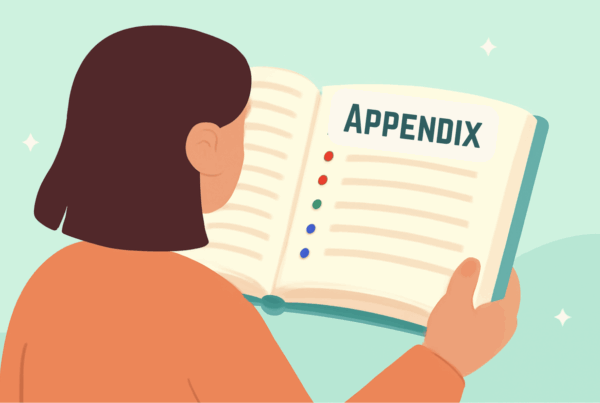Publishing your poetry collection is a significant milestone for any poet. This article provides a comprehensive guide to help you navigate the journey from writing poetry to seeing your poetry book in print. Whether you’re just beginning to compile your poetry collection or exploring the best publishing options, this guide will cover all essential steps and considerations.
An average poetry collection is a larger compilation of poems by a single author, typically resembling a book and consisting of around 30-100 poems. It takes time and multiple attempts for a poet to compile poems worthy of a full collection.
The importance of publishing your poetry collection cannot be overstated. It allows you to share your unique voice with a broader audience, establish your presence in the poetry world, and potentially achieve recognition as a published poet. By understanding the intricacies of the publishing process, you can make informed decisions and increase your chances of success.
Your Publishing Journey Awaits – Start NowThroughout this article, we will explore key aspects such as writing poetry, selecting and refining your poems, preparing your poetry manuscript, and choosing between traditional and self-publishing routes. We’ll also delve into marketing strategies to promote your poetry book effectively.
Writing Poetry
Writing poetry is both an art and a craft that requires dedication, practice, and a deep understanding of language. Honing your craft in writing poetry is essential for creating compelling, evocative work that resonates with readers. Here, we explore the importance of perfecting your poetic skills, the diversity of writing styles and themes, practical tips for writing poetry, and the role of creative writing courses and writing groups. Additionally, having a substantial number of poems written is crucial before compiling a poetry collection.
Importance of Honing Your Craft in Writing Poetry
Mastering the art of poetry requires consistent effort and a willingness to evolve. The process of writing poetry sharpens your ability to express complex emotions and ideas concisely and vividly. By refining your skills, you can transform raw inspiration into polished, impactful poems that leave a lasting impression. Continuous improvement in your writing enhances your creativity, broadens your stylistic range, and deepens your connection with your audience.
Different Writing Styles and Themes
Poetry is a versatile form of expression with numerous styles and themes. From traditional forms like sonnets and haikus to free verse and contemporary experimental styles, each approach offers unique opportunities for creativity. Themes in poetry are equally diverse, ranging from love and nature to social justice and personal introspection. Exploring different styles and themes can help you find your voice and establish a distinctive poetic identity. Experimenting with various forms allows you to push boundaries and discover new ways to articulate your thoughts and feelings.
Tips for Writing Poetry
1. Read Widely: Immerse yourself in the works of various poets to understand different techniques and styles. Reading a broad range of poetry can inspire you and inform your writing.
2. Write Regularly: Consistent practice is key to improving your poetry. Set aside time each day or week to write, even if it’s just a few lines.
3. Embrace Revision: Rarely is the first draft the best version of a poem. Be willing to revise and refine your work, focusing on word choice, rhythm, and imagery.
4. Use Vivid Imagery: Paint pictures with your words. Strong imagery can evoke emotions and create a more immersive experience for the reader.
5. Experiment with Form and Structure: Don’t be afraid to break the rules. Play with line breaks, stanza arrangements, and punctuation to enhance the poem’s impact.
6. Seek Feedback: Share your work with others to gain new perspectives. Constructive criticism can help you identify areas for improvement and grow as a poet.
The Role of Creative Writing Courses and Writing Groups
Enrolling in creative writing courses and participating in writing groups can significantly enhance your poetic skills. These environments provide structured learning, exposure to different writing techniques, and opportunities to receive feedback from peers and instructors. Creative writing courses often cover a range of topics, including poetry analysis, writing exercises, and the study of poetic forms. Writing groups offer a supportive community where you can share your work, discuss ideas, and receive constructive criticism.
Both courses and groups encourage discipline and accountability, helping you stay committed to your writing practice. They also provide valuable networking opportunities, connecting you with fellow poets and potential mentors. Engaging with a community of writers can inspire you, broaden your perspective, and foster a sense of camaraderie on your poetic journey.
In conclusion, honing your craft in writing poetry involves continuous practice, exploration of different styles and themes, and seeking feedback. Creative writing courses and writing groups play a crucial role in this process, offering guidance, support, and inspiration. By dedicating yourself to the art of poetry, you can create powerful, meaningful work that resonates with readers and establishes your voice in the poetry world.
Building Your Poetry Collection
Building your poetry collection is a rewarding yet challenging endeavor. It involves careful selection of poems, establishing a cohesive structure, rigorous editing, and seeking constructive feedback. Each of these steps is crucial to create a compelling and polished poetry book that resonates with readers. Additionally, the process of building your poetry collection includes selecting themes and organizing poems to ensure a coherent and engaging flow.
How to Choose Poems for Your Collection
Choosing the right poems for your collection is the first step. Begin by compiling all your poems, then read through them with a critical eye. Look for pieces that are strong, well-crafted, and emotionally resonant. Consider how each poem contributes to the overall narrative or theme of your collection. Select poems that complement each other, offering a variety of tones, styles, and subjects while maintaining a unified voice.
Importance of Having a Theme or Cohesive Structure
A successful poetry collection often revolves around a central theme or cohesive structure. This could be an overarching topic, such as love, nature, or personal growth, or a more abstract concept, like resilience or transformation. A thematic focus provides direction and coherence, guiding the reader through a journey of interconnected poems. Cohesion can also be achieved through consistent stylistic choices, such as tone, form, or recurring motifs. By creating a collection with a clear theme or structure, you enhance its impact and make it more memorable.
Editing and Refining Your Poems
Editing is an essential part of building your poetry collection. Start with a thorough self-editing process, paying attention to every detail of your poems. Focus on clarity, conciseness, and imagery. Ensure that each poem flows well and contributes to the overall narrative. Look for redundancies, unnecessary words, and places where the poem could be more vivid or precise.
After self-editing, consider hiring a professional editor. An experienced poetry editor can provide valuable insights and help polish your work to a high standard. They can offer objective feedback on the structure, style, and content of your poems, ensuring they are cohesive and compelling. Remember, even the most skilled poets benefit from external perspectives and meticulous editing.
Seeking Feedback from Other Poets and Writing Groups
Receiving feedback from other poets and writing groups is invaluable. Join a writing group where you can share your work and receive constructive criticism. Fellow poets can offer fresh perspectives and help you identify strengths and areas for improvement. They can also provide support and encouragement throughout the writing and editing process.
Participating in writing workshops and attending poetry readings can further enhance your skills and expand your network. Engaging with a community of writers fosters a collaborative environment where you can exchange ideas, learn new techniques, and gain inspiration.
Your Publishing Journey Awaits – Start NowIn summary, building your poetry collection involves careful selection of poems, establishing a cohesive theme or structure, rigorous editing, and seeking feedback from others. By thoughtfully curating your poems and refining your work, you can create a powerful and unified collection that resonates with readers and showcases your unique voice as a poet. Engaging with a supportive writing community can provide the feedback and encouragement needed to elevate your collection to its fullest potential.
Preparing Your Poetry Manuscript
Preparing your poetry manuscript is a critical step in the journey to publishing your poetry collection. This process involves careful formatting, professional editing, meticulous line editing, and adhering to submission guidelines. Additionally, preparing a compelling cover letter is essential for presenting your manuscript to publishers or self-publishing platforms.
Formatting Your Poetry Manuscript
Proper formatting is crucial for making your poetry manuscript professional and easy to read. Start by organizing your poems in a logical order, typically beginning with your strongest pieces to capture the reader’s attention. Ensure each poem starts on a new page, and use consistent font, spacing, and margins throughout the manuscript.
- Font: Use a standard, readable font like Times New Roman or Arial, typically in 12-point size.
- Spacing: Double-space your manuscript to give editors room to make notes.
- Margins: Set one-inch margins on all sides.
- Headers: Include page numbers and a header with your name and the title of the manuscript on each page.
The Importance of a Professional Editor
Hiring a professional editor can significantly enhance the quality of your poetry manuscript. An editor brings an objective perspective and a trained eye to your work, identifying areas that need improvement. They can help with:
- Content: Ensuring your poems are clear, engaging, and emotionally impactful.
- Consistency: Maintaining a cohesive voice and style throughout the collection.
- Grammar and Syntax: Correcting any grammatical errors and refining your language for clarity and effect.
Investing in professional editing can make your manuscript more polished and appealing to publishers and readers.
Line Editing and Interior Formatting
Line editing focuses on the finer details of your manuscript, including word choice, rhythm, and line breaks. This step ensures that each poem flows smoothly and maintains its intended impact.
- Word Choice: Ensure that each word serves a purpose and enhances the poem’s meaning.
- Rhythm and Meter: Pay attention to the rhythm of your lines and how they sound when read aloud.
- Line Breaks: Experiment with line breaks to maximize the emotional and visual impact of your poems.
Interior formatting involves the overall layout of your manuscript. For poetry, the visual arrangement on the page is crucial. Maintain consistency in how poems are presented, including title placement, stanza breaks, and indentation.
Submission Guidelines and Preparing a Cover Letter
When submitting your poetry manuscript to publishers or self-publishing platforms, it’s essential to follow their submission guidelines meticulously. These guidelines can vary widely, so read them carefully and ensure your manuscript adheres to their specifications.
- Submission Guidelines: Check for specific requirements regarding formatting, length, and the number of poems. Some publishers may also request a synopsis or a list of previously published poems.A well-crafted cover letter is vital for making a good first impression. It should be concise, professional, and engaging.
- Introduction: Briefly introduce yourself and your poetry background.
- About Your Collection: Provide a summary of your poetry collection, highlighting its themes and unique aspects.
- Publication Credits: Mention any previous publications or awards.
- Closing: Express your appreciation for their time and consideration.
Preparing your poetry manuscript involves meticulous formatting, professional editing, detailed line editing, and careful adherence to submission guidelines. A polished manuscript and a compelling cover letter increase your chances of success, whether you pursue traditional publishing or self-publishing. Taking these steps ensures that your poetry collection is presented in the best possible light, ready to captivate publishers and readers alike.
Exploring Publishing Options
Choosing the right publishing route for your poetry collection is a crucial decision that can impact your reach, control over your work, and potential earnings. This section will explore traditional publishing and self-publishing, outlining the benefits and processes involved in each. Whether you choose to publish a poetry book through traditional channels or opt for self-publishing, understanding the different options available is essential.
Traditional Publishing
Traditional publishing remains a popular option for poets seeking to reach a broad audience through established channels. This path involves submitting your manuscript to publishers, who, if interested, will handle the production, distribution, and marketing of your book.
Submission to Traditional Publishers
Submitting your poetry manuscript to traditional publishers requires thorough research and preparation. Start by identifying publishers who accept poetry submissions and align with your style and themes. Most publishers have specific submission guidelines, so ensure your manuscript adheres to their requirements.
Query Letter: Write a compelling query letter introducing yourself, your collection, and why you believe it’s a good fit for the publisher.
Submission Package: Include your manuscript, a synopsis, and any requested materials such as a cover letter or a list of previously published poems.
Small Presses and Independent Publishers
Small presses and independent publishers are often more accessible to emerging poets than large, established publishing houses. They tend to take more risks on new voices and offer a more personalized publishing experience.
Research: Look for small presses that specialize in poetry or have a track record of publishing new poets.
Submission Guidelines: Follow their specific submission instructions, which are typically more flexible than those of larger publishers.
Literary Journals and Submitting Individual Poems
Literary journals are an excellent way to build your reputation and credentials as a poet. By submitting individual poems to these journals, you can gain publication credits, receive feedback, and reach a dedicated audience of poetry readers.
Your Publishing Journey Awaits – Start NowTargeted Submissions: Research journals that align with your style and themes. Many journals have specific submission periods, so plan accordingly.
Cover Letters: Write concise cover letters that introduce your work and highlight any relevant achievements or previous publications.
Self-Publishing
Self-publishing has become an increasingly viable option for poets looking to self-publish their work, offering benefits such as maintaining creative control and earning higher royalties. This route allows you to oversee the entire publishing process, from production to marketing.
Advantages of Self-Publishing Poetry
- Creative Control: You have complete control over the content, design, and presentation of your poetry book.
- Higher Royalties: Self-publishing often results in higher royalty rates compared to traditional publishing.
- Faster Publication: The self-publishing process is typically faster, allowing you to get your work to readers more quickly.
In conclusion, exploring both traditional and self-publishing options is essential to determine the best path for your poetry collection. Traditional publishing offers established distribution and marketing channels, while self-publishing provides greater control and potentially higher earnings. By understanding the processes and benefits of each route, you can make an informed decision that aligns with your goals as a poet.
Self-Publishing Your Poetry Collection
Self-publishing your poetry collection allows you to maintain creative control, reach your audience directly and potentially earn higher royalties. This section will outline the steps in the self-publishing process, guide you in choosing the right platform, and highlight Spines, a top-tier self-publishing service that combines human expertise with advanced technology. Additionally, self-publishing platforms provide an excellent opportunity to publish your poetry book, making it accessible for any writer to get their poems in front of an audience.
Steps in the Self-Publishing Route
Self-publishing involves several key steps to ensure your poetry collection is professionally produced and effectively marketed:
1. Manuscript Preparation: Start with a thoroughly edited and formatted manuscript. Ensure your poems are arranged in a cohesive order and formatted consistently.
2. Cover Design: Design a captivating cover that reflects the theme and tone of your collection. A professional-looking cover can significantly impact your book’s appeal.
3. Interior Formatting: Format the interior of your book for both print and digital versions. This includes choosing appropriate fonts, line spacing, and page layouts.
4. ISBN and Copyright: Obtain an ISBN (International Standard Book Number) for your book, which is necessary for distribution. Register your copyright to protect your work.
5. Choose a Publishing Platform: Select a self-publishing platform that meets your needs in terms of distribution, cost, and ease of use.
6. Upload Your Manuscript: Follow the platform’s guidelines to upload your manuscript, cover, and other necessary files.
7. Set Pricing and Distribution: Decide on the pricing for your book and choose distribution channels. Consider both print-on-demand and digital formats.
8. Marketing and Promotion: Develop a marketing plan to promote your book through social media, book readings, author websites, and reviews.
Choosing the Right Self-Publishing Platform
Selecting the right self-publishing platform is crucial for your book’s success. Consider factors such as distribution reach, cost, ease of use, and available support. Popular platforms include:
- Amazon Kindle Direct Publishing (KDP): Offers wide distribution and ease of use, particularly for digital formats.
- IngramSpark: Provides extensive distribution options for both print and digital books, suitable for reaching bookstores and libraries.
Spines: The Solution
When it comes to self-publishing services, Spines stands out as a top choice for poets. Spines combines human expertise with advanced technology to provide comprehensive support throughout the publishing process.
Combination of Human Expertise and Advanced Technology
Spines offers a unique blend of personalized service and cutting-edge technology. Their team of experts includes editors, designers, and marketing professionals who work closely with you to ensure your poetry collection is polished and professional. Their technology platform simplifies the publishing process, making it accessible and efficient for poets.
Affordable Packages Starting at $99 per Month
Spines provides a range of affordable packages, starting at just $99 per month. This pricing structure makes professional publishing services accessible to emerging poets and those with limited budgets. Each package includes essential services to help you produce a high-quality poetry collection.
Essential Services Covered by Spines
Spines’ packages cover all the critical aspects of self-publishing, including:
- Manuscript Editing: Professional editing to refine your poems and ensure they are polished.
- Cover Design: Custom cover design to capture the essence of your collection.
- Interior Formatting: Expert formatting for both print and digital versions.
- ISBN and Distribution: Assistance with obtaining an ISBN and setting up distribution channels.
- Marketing Support: Guidance on marketing strategies to promote your book effectively.
In conclusion, self-publishing your poetry collection allows for complete creative control and potentially higher earnings. By following the self-publishing steps, choosing the right platform, and utilizing a comprehensive service like Spines, you can successfully bring your poetry collection to life and reach a wider audience.
Marketing and Promoting Your Poetry Book
Marketing and promoting your poetry book are essential steps to ensure it reaches a wide audience and gains the recognition it deserves. Effective marketing involves building a social media presence, engaging with online poetry communities, organizing book launches and readings, and obtaining book reviews and endorsements. This section will provide a detailed guide to these strategies. Additionally, using platforms like PublishDrive to publish poetry can significantly enhance your distribution reach and provide valuable promotional features.
Building a Social Media Presence
Social media is a powerful tool for promoting your poetry book. It allows you to connect with readers, share your work, and build a following. Here are some tips to build a strong social media presence:
1. Choose Platforms Wisely: Focus on platforms where your target audience is most active. Instagram, Twitter, and Facebook are popular among poets and poetry enthusiasts.
2. Create Engaging Content: Share snippets of your poems, behind-the-scenes looks at your writing process, and updates about your book. Visual content, such as images of your book cover or videos of you reading your poems, can be particularly engaging.
3. Interact with Followers: Respond to comments, participate in discussions, and engage with other poets and readers. Building relationships with your audience fosters a loyal following.
4. Use Hashtags: Utilize relevant hashtags to increase the visibility of your posts. Popular hashtags include #poetrycommunity, #poetrybook, and #amwriting.
Engaging with Online Poetry Communities
Online poetry communities are vibrant spaces where poets and readers gather to share and discuss poetry. Engaging with these communities can help you reach a wider audience and gain valuable feedback.
1. Join Poetry Forums and Groups: Participate in online forums and social media groups dedicated to poetry. Share your work, comment on others’ poems, and take part in discussions.
2. Attend Virtual Poetry Events: Many online communities host virtual readings, workshops, and open mics. Attending and participating in these events can help you connect with other poets and promote your book.
3. Collaborate with Other Poets: Collaborations can introduce your work to new audiences. Consider co-hosting an online event, contributing to a poetry anthology, or simply sharing each other’s work on social media.
Organizing a Book Launch and Readings
A book launch and readings are traditional yet effective ways to promote your poetry book. These events provide an opportunity to connect with readers in person and create buzz around your book.
1. Plan a Book Launch Event: Organize a book launch to celebrate the release of your poetry collection. This can be a physical event at a local bookstore, library, or café, or a virtual event on platforms like Zoom.
2. Host Readings: Schedule poetry readings at various venues. Local bookstores, literary festivals, and community centers are excellent options. Virtual readings can also reach a global audience.
3. Engage Your Audience: At these events, read selected poems from your book, discuss your writing process, and answer questions from the audience. Offering signed copies of your book can also be a great incentive.
Getting Book Reviews and Endorsements
Book reviews and endorsements add credibility to your poetry book and help attract new readers. Here’s how to secure them:
1. Request Reviews from Readers: Encourage your readers to leave reviews on platforms like Amazon, Goodreads, and your social media pages. Honest reviews can influence potential readers.
2. Reach Out to Book Bloggers and Reviewers: Contact bloggers and reviewers who specialize in poetry. Provide them with a free copy of your book in exchange for an honest review.
3. Seek Endorsements from Established Poets: If you have connections with well-known poets or literary figures, request an endorsement. A positive quote from a respected poet can significantly enhance your book’s credibility.
4. Utilize Literary Journals: Submit your book for review to literary journals and magazines. A published review in a reputable journal can reach a broader audience and lend authority to your work.
In conclusion, marketing and promoting your poetry book requires a multifaceted approach. By building a social media presence, engaging with online poetry communities, organizing book launches and readings, and obtaining book reviews and endorsements, you can effectively reach your target audience and ensure your poetry collection receives the recognition it deserves.
Final Thoughts
Publishing your poetry collection is a fulfilling journey that combines creativity with strategic planning. From writing and refining your poems to choosing the best publishing route and promoting your work, each step is crucial for success. Whether you opt for traditional publishing or self-publishing, understanding the industry and leveraging available resources will help you achieve your goals.
When you publish poems, it is essential to understand the publishing landscape, including the role of chapbooks as a stepping stone to a full-length collection. Remember, persistence and patience are key. By following this comprehensive guide, you can confidently share your poetic voice with the world and make a lasting impact in the poetry community. Start your journey today and let your words reach readers far and wide.
Your Publishing Journey Awaits – Start Now






